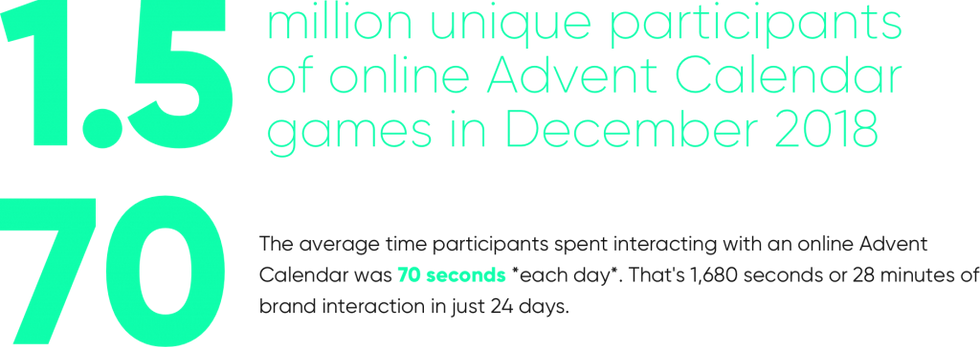The Facts Behind Why Gamification Works

We gathered a list of the most interesting gamification facts
While some people mistake gamification for a fun few minutes, it’s much more. From analyzing LeadFamly data and client campaigns, we know that gamification campaigns increase audiences’ time engaged, money spent, and social media habits. Some people question if gamification actually has an impact on business. We can say it absolutely does.
Knowing that it’s a fast-growing industry, at LeadFamly we like to say gamification is fun but it’s also serious business. Gamification expert Jane McGonigal says that “games give us unnecessary obstacles that we volunteer to tackle.” The current gamification market size is estimated to be worth between £2.46b and £9.82b. It’s varied but growing fast. The CAGR (combined annual growth rate) for the gamification market is 36.2%.
Here, we’ve compiled gamification statistics and facts, and split them up into these categories:
Engagement
Motivation
Marketing
Employees
Let’s get started.
Engagement
1. Gamification increases engagement and reduces the chance of banner blindness (Optin Monster, 2019).
2. Every second, someone begins playing a game powered by LeadFamly (LeadFamly, 2019).
WATCH VIDEO HERE
3. In December 2018, the platform saw:
Over 26,000,000 sessions
An average of 70 seconds engagement time
An average bounce rate of 16%
(LeadFamly, 2018).

4. The average person spends only 11.1 seconds on average reading an email (Litmus, 2017).
5. The Christmas Advent Calendars that clients built engaged and activated their target audience (LeadFamly, 2019).
6. 80% of consumers interviewed indicated that they are more likely to business with a company if it offers personalized experiences (Epsilon, 2018).
7. The average time spent playing video games in 2018 was 5.96 hours per week (Statista, 2018).
8. Three reasons gamification is successful:
We experience a sense of flow where we are completely absorbed in an activity
It provides instant feedback because gaming creates a world that gives us instant results based on our performance
It allows us to experience advances, which are intrinsically gratifying
(Deloitte, 2016).
9. Gamification can result in a 100-150% increase in marketing metrics like website analytics and community activities (Small Business Trends, 2019).
10. 93% of marketers agree that interactive content [gamification!] is effective in engaging and educating (Demand Gen Report, 2018).
Motivation
11. Strive for ‘epic wins’, which game designer Jane McGonigal defines as an outcome or experience a player didn’t even know was possible until they tried (TED Talk, 2010).
12. Psychologically, the positive effects of gamification can be explained by Flow Theory. Coined by psychologist Mihály Csíkszentmihályi, flow is the mental state a person assumes when they are completely focused on, involved with, or immersed in a particular activity such as playing a game.
Elements required for a consumer to achieve a flow state-of-mind with gamification include:
Clearly defined goals and identifiable rewards
A challenging activity or task that requires a certain level of skill to complete
A balance between a user’s ability level and the challenge put in front of them
The merging of action and awareness to create a sense of flow
A sense of control over the situation
Direct and immediate feedback
Delivery of rewards as expected
(Very Well Mind, 2019).
Marketing
13. 81% of marketers believe interactive content is more attention-grabbing than its static counterpart. (Demand Gen Report, 2018).
14. A recent survey found that 56% of marketers surveyed use visuals in their content almost 100% of the time (Digital Information World, 2019).
Employees
15. SAP Streamwork added gamification in brainstorming groups and grew generated ideas by 58% (Fresh Service via Yu-kai Chou).
16. A survey by the Aberdeen Group shows that companies who use gamification can improve the employee engagement level by 48% and financial turnover by 36% (Aberdeen Group).
17. Gamification also helps in customer retention, and as per a study Harvard Business Review, increasing customer retention rates by 5% increases profits by 25% to 95%. (Harvard Business Review, 2014).
18. Employees’ retention and skills increase by up to 40% when work is made fun (Forbes, 2017).
Want to know more?
Download our e-guide The True Value Of Gamification.




















